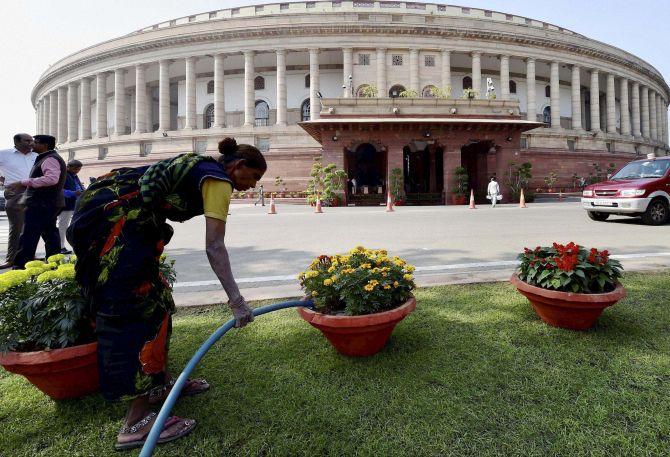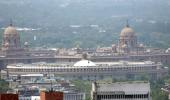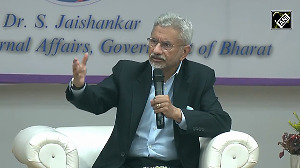The construction work of the new Parliament building started on Friday, over a month after Prime Minister Narendra Modi laid the foundation stone for the project under the government's ambitious Central Vista redevelopment plan.

The new Parliament building will have a triangular shape and is expected to be completed by the 75th anniversary of India's independence in 2022. The government plans to hold the monsoon session of Parliament in 2022 in the new building.
"The construction work of the Parliament building has started," an official said.
PM Modi had laid the foundation stone for the new Parliament building on December 10 last year.
Earlier this week, a 14-member heritage panel gave its approval to the new Parliament building while also giving the go-ahead to the Central Vista redevelopment project.
The Supreme Court had asked the Centre to seek prior approval from the panel and other relevant authorities before starting the construction of the new building.
The construction work could not start earlier as the government had assured the Supreme Court that no construction or demolition work would commence till the apex court decided the pending pleas on the issue.
The new building is being constructed by Tata Projects Ltd. The project is estimated to cost Rs 971 crore.
Tata Projects Ltd said despite the 35-day delay in the commencement of the construction work, it is confident that it will be able to deliver the project on or before time.
"Our plans of action are already in place to accelerate the schedule by augmenting resources like skilled manpower and formwork etc," said Sandeep Navlakhe, vice president and business unit head of Tata Projects Ltd.
"Our reinforcement required to be placed in the raft and walls are already made ready. Other off-site activities like procurement of stone for external cladding, MEP LLEs, carpets, etc. happened during these 35 days. We are more than confident that we will be able to deliver this building to the nation on or before time," he said.
The new structure will come up in front of the existing Parliament that was built nearly 94 years ago at a cost of Rs 83 lakh at that time and would eventually be turned into a museum.
The new Parliament building will house larger Lok Sabha and Rajya Sabha halls with capacities of 888 seats and 384 seats to accommodate an expanded Parliament after the freeze on its expansion lifts in 2026. The Lok Sabha Hall will also have an additional capacity, up to 1,272 seats, to host joint sessions.
According to the plan, provisions will be made in furniture for smart displays and biometrics for ease of voting with an intuitive and graphical interface, digital language interpretation and recording infrastructure to produce real-time metadata, programmable microphones that put the control of managing the house with the Speaker.
Besides the new Parliament building, the redevelopment of the Central Vista -- the nation's power corridor -- envisages a common central secretariat, revamping of the 3-km Rajpath from Rashtrapati Bhavan to India Gate, new Prime Minister's Residence and Prime Minister's Office, and a new Vice-President Enclave.










 © 2025
© 2025